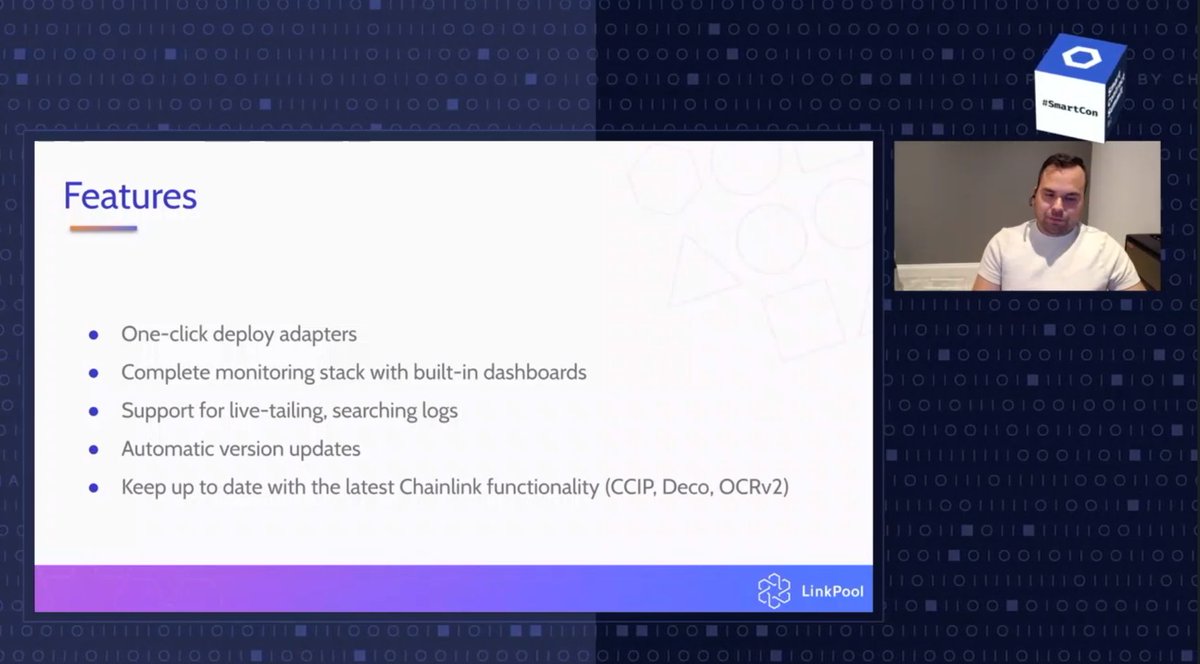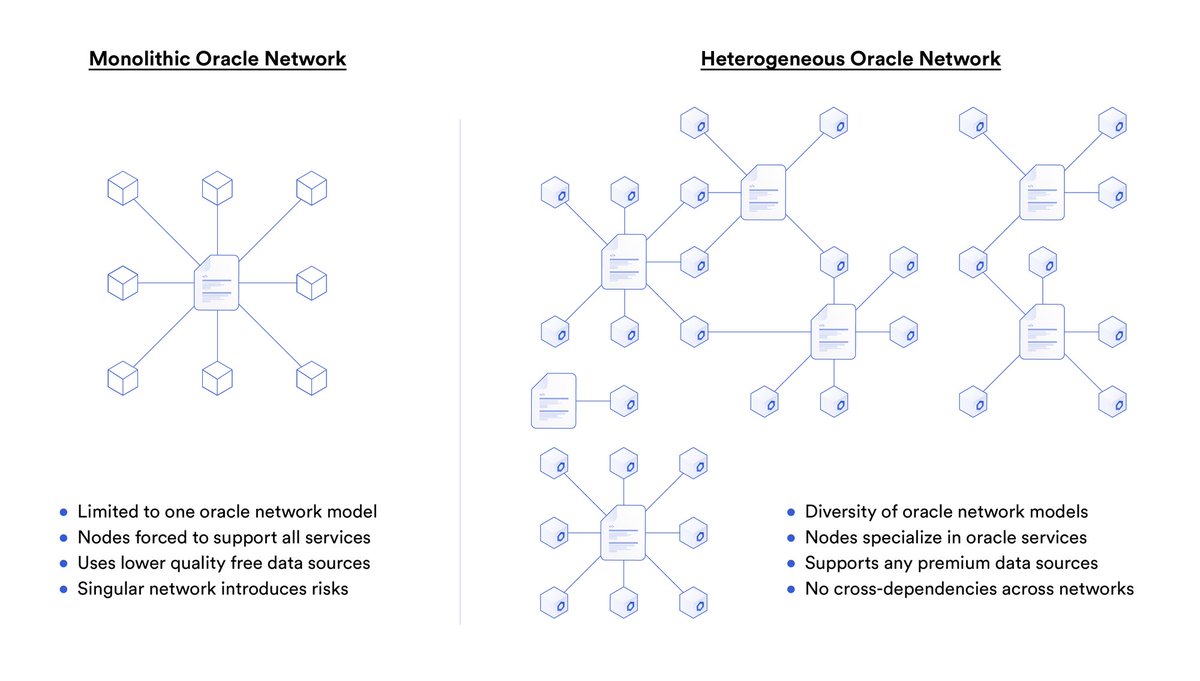Next up on at #SmartCon on the Chainlinked stage is @HuxtableJonny from @linkpoolio on Chainlink Node as a Service 

Announced in 2018
One-click deployment for Chainlink nodes
Lowers barrier of entry to participate in the Chainlink Network
One-click deployment for Chainlink nodes
Lowers barrier of entry to participate in the Chainlink Network

@linkpoolio is the first third-party Chainlink focused company, ecosystem developer, and node operator 

Initial idea had too much centralization risk
If linkpool was the only company doing this in 2018, it could have centralized the network (not ideal)
Initial idea was too narrow in scope (lacked tooling in 2018, no Chainlink Market)
If linkpool was the only company doing this in 2018, it could have centralized the network (not ideal)
Initial idea was too narrow in scope (lacked tooling in 2018, no Chainlink Market)

Node as a Service much greater in scope now
Self service model, developers can create multiple nodes from a pool of highly-reliable Chainlink node operators
One-click deployment and configure with high-quality data sources
Resulting in a user's own self-deployed DON
Self service model, developers can create multiple nodes from a pool of highly-reliable Chainlink node operators
One-click deployment and configure with high-quality data sources
Resulting in a user's own self-deployed DON

Started Linkpool in 2017, went full time in 2018 after $LPL token sale, launched Chainlink node in 2019 and launched market.link
Supporting chainlink's growth across multiple networks
Supporting chainlink's growth across multiple networks

Node as a Service Platform
Marketplace of NaaS providers (include mulitple node operators, DevOps teams, data providers, open-source)
Support for all Blockchain Networks
Marketplace of NaaS providers (include mulitple node operators, DevOps teams, data providers, open-source)
Support for all Blockchain Networks

Linkpool will be open sourcing their API and infrastructure templates for rapid deployment
Powered by The Chainlink Market backend, hardened service, market becomes the backbone of one-click deployment and access to node operators
On-chain registries and billing
Powered by The Chainlink Market backend, hardened service, market becomes the backbone of one-click deployment and access to node operators
On-chain registries and billing

One-click deploy adapters (shortens time to deploy)
Complete monitoring stack
Support searching logs
Automatic version updates
Keep up to date with latest Chainlink functionality (CCIP, DECO, OCR 2.0)
Complete monitoring stack
Support searching logs
Automatic version updates
Keep up to date with latest Chainlink functionality (CCIP, DECO, OCR 2.0)

Initial release in Q3-Q4 2021
Completely free, starting with testnet blockchains, tailored to developers
Further releases include support for more blockchains, mainnet, third-party NaaS providers, on-chain billing, and much more
Completely free, starting with testnet blockchains, tailored to developers
Further releases include support for more blockchains, mainnet, third-party NaaS providers, on-chain billing, and much more

• • •
Missing some Tweet in this thread? You can try to
force a refresh




















